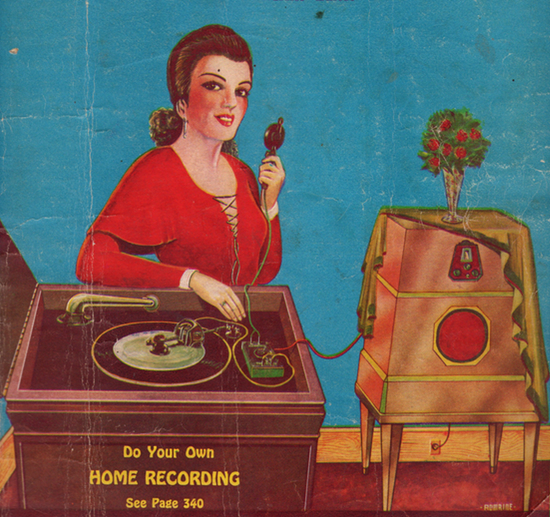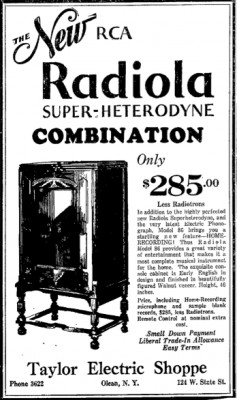Illustration from the cover of the December 1930 issue of Radio Craft magazine

When Thomas Edison invented the phonograph in 1877 the world was introduced for the first time to a machine that could both record and play sound. It started as an incredibly crude machine with very little in the way of practical application for posterity—removing the tinfoil on which the recording was made rendered it unplayable, meaning that you either had to listen to the recording you made over and over again or take off the tinfoil and never hear that recording again.
Edison would return to the phonograph, attempting to “perfect” it over the following decades; it served as a welcome distraction for him whenever he was frustrated with his other inventions. But Edison resisted the idea of recorded music, and was late to the game when it came to monetizing recorded sound (though he later started his own record company) and even later in understanding the importance of arguably the most important advancement for the spread of popular music: radio.
In 1913 Charles E. Apgar would become known as the “pioneer home-recorder” in radio nerd circles when in October of that year he became the first person to record Morse code signals on a phonographic cylinder. But it would be take another couple of decades for home audio recording to become the latest and greatest toy for early adopters.
Radio itself only gained steam as a popular broadcast medium in the United States in the mid-1920s. Once it hit the masses, the radio nerd community turned its attention to home audio recording as a fun, untouched field. People sold kits that could be attached to existing radios in order to do your own recording of radio programs on phonograph records. And radio magazines of the 1930s proclaimed that recording the human voice on a phonograph record meant parents could preserve the voices of their children as they grew older and conversely, children could preserve the wisdom of their parents and grandparents.
No less than Hugo Gernsback—the father of science fiction and a publisher who did much for the field of radio—declared in 1930 that the technology of home audio recording had advanced so considerably that “even an intelligent child can become proficient” in it. Radio manufacturers began including “home recording” capabilities in their sets, with the desired goal of busting out of radio hobbyist circles and into mainstream America. This technology, however easy to use, would come at a price. RCA made the Radiola Model 86 which sold for the hefty price of $285 (about $3,800 adjusted for inflation). A hard sell no doubt at the beginning of the Great Depression.
Ad for the new RCA Radiola with home-recording capabilities (Dec 19, 1930 Olean Times)

An ad in the December 19, 1930 issue of the Olean Times in Olean, New York read:
In addition to the highly perfected new Radiola Superheterodyne, and the very latest Electric Phonograph, Model 86 brings you a startling new feature — HOME-RECORDING! Thus Radiola 86 provides a great variety of entertainment that makes it a most complete musical instrument for the home. The exquisite console cabinet in Early English in design and finished in beautifully figured Walnut veneer. Height, 46 inches.
The December 1930 issue of Radio Craft magazine featured a cover which touted the burgeoning fad of home audio recording.
HOME-RECORDING is the latest adjunct to radio and has already reached a commercial stage such that the radio dealer and the independent Service Man can now cash in on this new feature.
Home-recording is likely to take the country by storm, as soon as the, public awakens to its possibilities. Parents would like to preserve the voices of their children—and children in turn will be anxious to preserve the voices of their parents and grandparents; so that the spoken word will remain after the little folks have grown up, or the old have gone.
A good deal of money can be made by installing such home-recording sets in homes; and the present article—the first of an authoritative nature to appear in any radio publication—brings together under one head the better- known recording anparatus now on the market.
The magazine called voice recordings on the Radiola an “audio snapshot,” a somewhat apt analogy to the photograph in its unscripted recording for posterity.





